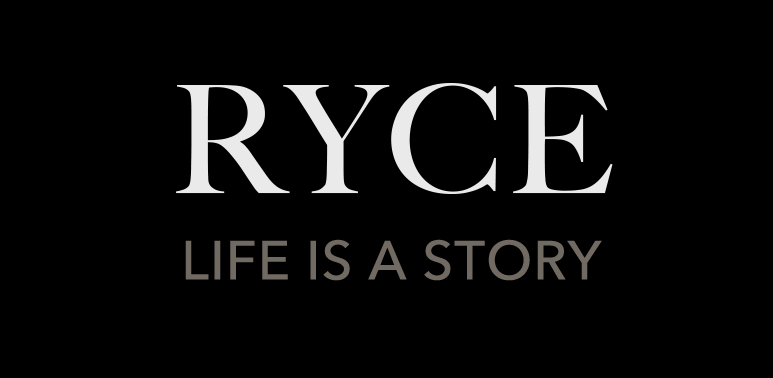The rules must first be learned in order to be broken
There are a lot of writers out there who take their poetry very, very seriously. They study tone, lineation, verse and structure. They analyze rhyme, alliteration, assonance, and the many conventions of Western poetry. And while it’s important for a writer to understand the function of line-breaks, alliteration and form, etc – poetry remains one of the few forms of prose where there are no rules. In an essay about writing poetry, Robert Pinsky—one of America’s foremost poet-critics—states: “There are no rules. Or, you can modify that rule by observing that each work of art generates its own unique rules.” And critic and poet, James Longenbach, in ‘The Art of the Poetic Line,’ connects the definition of poetry to lineation:
“Poetry is the sound of language organized in lines.”
I began to view my poetry with closer consideration. While I had understood the fundamentals of free verse and stanzas, the more I read about poetry the less I felt I knew. It was as if I had been writing blindfolded, and yet as Pinsky claims, with an element of confutation, there are no rules. Or rather rules that must be learned in order to be broken. And perhaps not altogether broken, but repurposed, re-contextualized.
My earlier poems (written in my mid-late 20s) were feverishly scribbled out into exercise pads. And while they provoked some striking imagery and featured clever metaphors, I had no real understanding of poetry. I was too impatient back then. It was all emotion – open heart surgery stitched together with tired metaphors and themes of unrequited love. Moreover, they were unabashedly verbose and narcissistic and had no respect for the page.
The art of the line
Over time my poetry improved, but it would take many more years to develop a respect for the neutral space on a page – that wonderful white canvas that sits waiting for just the right amount of words. It was only after I began to appreciate the importance of words and lineation as architectural elements, was my first poem published – an eerie piece titled ‘Parasomnias.’
Her azure skin waning under a lunar gloom.
Just the bare hull of her, spread out like a water deer,
weighing her head down against a familiar cloud,
surrendering to shadow.
The poem is full of dropped-lines to give the reader a feeling of disruption and horizontal rhythm, while also utilizing end-stopped lines to offer a sense of completion. However, if I was to write the poem today I might employ enjambment to retain more mystery – forcing the reader to join the dots. Enjambment is a style that a writer adopts in which lines don’t end with punctuation, nor can they be comprehended independently. Also, each time a writer enjambs a line the reader is forced to read the next line in order to understand the previous one.
Using enjambment the poem may have been written as:
just the bare hull of her spread
out like a water deer
weighing her head
down against a familiar cloud
This tweaks the reader’s curiosity more, as Rebecca Hazelton explains, “This withholding produces a subtle kind of mystery or anxiety, as I’m not quite sure what each line means until I continue reading the next one.”
My approach to writing poetry has always been the same: I have written from instinct, allowing my unconscious mind to fill the page. Yet, understanding the mechanics of poetry and how these literary devices are used is remarkably liberating. Sentences begin to take on different meanings – acting as powerful amplifiers of syntax and rhythm. Unlike my older poems, such as ‘Parasomnias’—which was written as line groups of irregular length called verse paragraphs—my more recent poems are organized into even line breaks.
Sometimes these choices of form are influenced by the poetry I’m reading at the time. Take Sylvia Plath’s poem ‘Lady Lazarus’ for example, written prior to her death in 1963. It is a poem that wrestles with the subject of identity, regeneration and death, written in three line stanzas called tercets.It gives the poem a unified order while maintaining a sense of coalescence. The number 3 is also the number of of the Trinity, representing a divine communication with angels or spiritual guidance. Was Plath aware of this when she was writing the poem? Could it perhaps be a kind of confessional prayer?
Dying
Is an art, like everything else.
I do it exceptionally well.

Finding your illusive voice
Next, I began to analyze my voice, or more to the point, hoped to figure out what my voice actually was. But in order to begin this inquiry I needed to really understand: what is voice? In an article for Yale National Initiative, Octavia Utley describes it elegantly:
“Voice is the person behind the words that speak out to the audience. Voice is imagery, tone, patterns of sound, rhythm, and diction. Voice is the powerful words on a page that form a relationship with you and the writer. Voice is your personality and resonance flowing in print.”
Utley goes on to describe how the writer uses “lively, powerful words” to connect with the reader. But the concept of voice needs a working definition. An example of a poet with a distinct voice—other than Plath and her contemporaries—is Canadian poet, Mark Strand. When I read Strand’s work I am stunned by the conviction behind each line. His poem ‘Coming to This’ is a fine example of voice and tone:
We have done what we wanted.
We have discarded dreams, preferring the heavy industry
of each other, and we have welcomed grief
and called ruin the impossible habit to break.
Strand’s use of enjambment and his cynical, misanthropic tone, acts as a warning to humanity – perhaps a warning come too late. It is a bitter voice, yet commanding. But most importantly, it is consistent. I began to read back over my poems—searching for my illusive voice between the lines—and came to realize that I did indeed have a voice, I just hadn’t been aware of it.
In my poem ‘You Grew Out of The Wood,’ I use personification to bring the scene to life:
The sky is framed between two branches
like fingers curled into a sign –
twin trees bereft of birds.
The road is nothing but a scratch.
The house is burrowed in thickets of green.
like a horned owl.
In the following stanza I insert quotation marks to emphasize speech and inject a little humor with a pop-culture reference:
‘There’s no place like Redhill,’ you tell me
and I wait for you to click your heels together,
but you just smile.
Theme is the heart of a poem
Finally, there is the heart of a poem – its theme. My first book of poetry will follow two recurring themes: loss and innocence. When you take those words and add a preposition, it reads: loss of innocence. In many ways the two themes are synonymous with each other – there can be no loss without there being something precious to lose. At the same time, the two themes encompass the nature of life and death – an undercurrent that moves throughout many of the poems. For instance, ‘Your Aphasia’ is about my late father who developed early onset dementia and passed away a year later from complications. It was a devastating loss, and while the poem isn’t specifically about death, it encompasses the illness and death in a catalytic way – singling out single keywords in each stanza.
We waited for a bolt of lightning to strike across your barren mind.
You looked at us with those hot air balloon eyes, as if you’d been abducted.
A large wrinkled boy stolen from the womb. Your hands reduced to rubble,
your body returning to granite, chalk, powder – the first
elements.
Sometimes a poem may be more overt, such as in the poem ‘A Single Look,’ about a child dying of cancer:
Her head is smooth,
hairless like a mango.
Her eyes are sunk
back and open,
blue pools held
within two bright globes.
This duality of loss and innocence appears throughout the collection. In ‘Arc of The Meridian’ an old man shows a child the stars on a clear night:
She is the weightless dancer, suspended against the alabaster sky.
There is puppetry to her movements,
a glow to her own voltage, a rattle of the mind.
And while there is innocence here, there is also the old man’s regrets concerning his faith and the loss of his wife:
The old man would like to explain: the cycle, the impermanence,
the giving and the taking away –
but she is just a seedling and he is full of termites:
old wood, a petrified Cypress.
T. S. Eliot once said:
“Poetry is not a turning loose of emotion, but an escape from emotion; it is not the expression of personality, but an escape from personality.”
Poetry is the wellspring of the unconscious where I can be at my most personal without feeling overexposed – where I can be vulnerable, yet not naked. Poetry is a delicate literary craft, involving subtle interchanging elements: words, form, meter, figurative language and theme. There is a sagacity during the writing process that was not present before – more poise in my words and a respect for the page. I have developed an enamored appreciation for the bare-knuckle discipline that comes with writing poetry; the erudition behind it. And rather than approach poetry as a purely cathartic experience, as I once did in my awkward bohemian youth, I now approach it as a craft that must be learned, dissected and mastered. Only then can a writer begin to develop their own voice and consistency of style.






Leave a comment